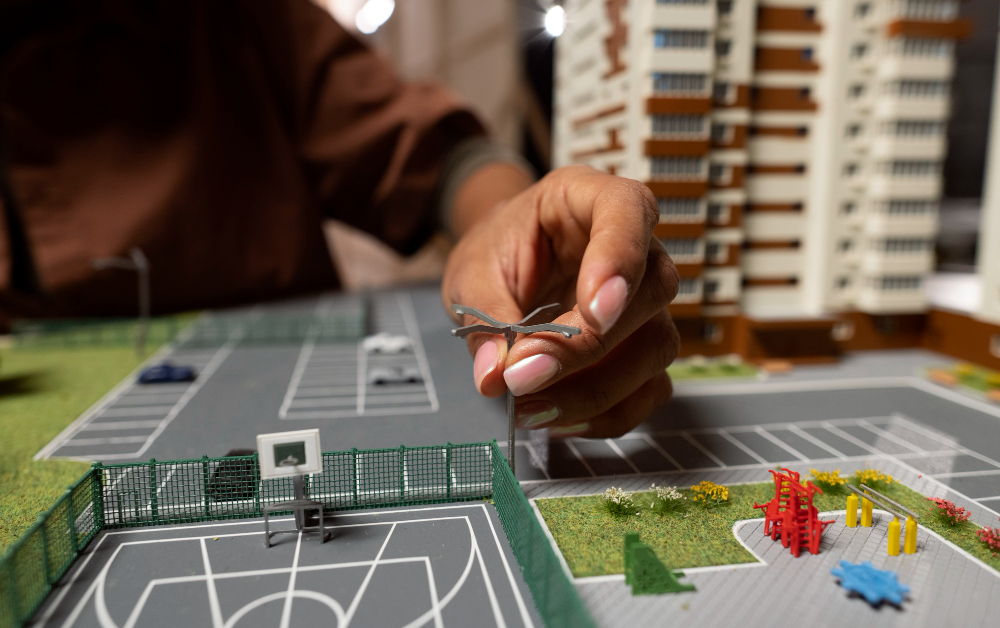Shaping Tomorrow: The Impact of Urban Designers on Cityscapes
- January 30, 2024
- 3 min

In the heart of modern civilization, cities stand as testaments to human ingenuity and progress. At the forefront of shaping these urban landscapes are the urban designers, professionals whose work dictates not only how our cities look but how they function, breathe, and evolve. In this blog post, we delve into the crucial role these designers play in sculpting the urban fabric of our future.
As we look around, it’s evident that urban spaces are more than just a collection of buildings and roads; they are living, breathing entities that reflect our society’s values, challenges, and aspirations. Urban designers, therefore, have a task that goes far beyond aesthetics. They are the architects of our urban experience, weaving together the complex tapestry of streets, parks, public spaces, and buildings into a cohesive whole that serves the needs of the community.
This post explores the multifaceted role of urban designers in creating vibrant, sustainable, and resilient urban environments. We will discuss how their work impacts our daily lives, the environment, and the future sustainability of our cities. Join us as we uncover the layers of urban design and its profound impact on our world.
Balancing Functionality and Aesthetics
The primary responsibility of an urban designer is to find the perfect balance between functionality and aesthetics in urban spaces. This delicate equilibrium is crucial for creating environments that are not only visually appealing but also practical and accessible for everyday use. Urban designers must consider various factors like traffic flow, pedestrian pathways, and public transportation while also ensuring that these elements blend seamlessly into an attractive and inviting setting. This balance is essential for fostering a sense of belonging and well-being among city dwellers.
Promoting Sustainable Urban Living
Sustainability is a buzzword in today’s urban development, but it’s far more than just a trend for urban designers. It’s a crucial aspect of their work. As advocates for sustainable urban living, urban designers play a pivotal role in shaping cities that are environmentally friendly and resource-efficient. They incorporate green spaces, promote the use of renewable energy, and design buildings and infrastructures that minimize environmental impact. Their work is instrumental in creating urban spaces that not only cater to the present but are also mindful of future generations.
Enhancing Community Engagement and Cohesion
Urban designers are not just planners; they are also community builders. A significant part of their role involves enhancing community engagement and cohesion. By designing inclusive and interactive public spaces, urban designers encourage social interactions and foster a sense of community among residents. Whether it’s through parks, community centers, or public art installations, their designs aim to create spaces that encourage people to come together, share experiences, and build relationships, thus strengthening the social fabric of the city.
Addressing Urban Challenges
Urban designers are at the forefront of tackling some of the most pressing challenges facing our cities today. From overcrowding and traffic congestion to lack of affordable housing and environmental degradation, they have a critical role in devising innovative solutions. By employing smart design strategies and advanced technology, urban designers work to create more efficient and livable cities. Their efforts are key in addressing issues like urban sprawl, ensuring public safety, and enhancing the quality of urban life for all residents.
Fostering Economic Development
The work of an urban designer also has a significant impact on the economic vitality of a city. Well-designed urban spaces attract businesses, tourism, and investment, contributing to the overall economic health of the area. Urban designers play a vital role in creating vibrant commercial districts, revitalizing underused areas, and planning for sustainable economic growth. Their strategic vision helps in shaping urban areas that are not only prosperous but also equitable and inclusive, offering opportunities for all segments of society.
Adapting to Changing Needs
In an ever-changing world, the ability to adapt is crucial, and this is especially true in urban design. Urban designers are tasked with anticipating future trends and needs, adapting their designs to accommodate them. This might include planning for population growth, technological advancements, or changing climate conditions. Their foresight and flexibility are vital in ensuring that our cities are not just equipped to handle the challenges of today but are also prepared for the uncertainties of tomorrow.
Conclusion
In conclusion, the role of urban designers in shaping the urban future is both vast and vital. They are not just designers of spaces but custodians of the urban experience, tasked with the immense responsibility of crafting environments that cater to the needs of diverse populations. Their work touches every aspect of urban life, from the aesthetic appeal of our cities to their economic vitality, sustainability, and adaptability.
As we move forward into an increasingly urbanized world, the significance of thoughtful urban design cannot be overstated. It is through the dedicated efforts of urban designers that our cities transform into more than just places to live—they become vibrant, sustainable, and inclusive communities that enrich our lives in countless ways. The urban future is an exciting, ever-evolving canvas, and urban designers are the artists who bring this canvas to life, creating a legacy that will endure for generations to come.
Read More:
Best Urban Planning Firm
About Phil Myrick
Phil Myrick is an advisor to planning and development projects around the world and former CEO of Project for Public Spaces. Phil applies research into how people interact with their environments and each other to create vibrant places, destinations, districts, and developments. His strategic advice has helped his clients achieve their goals of attracting people, engaging people in their community, strengthening connections and social fabric, and stimulating economic development. Phil is married with two teenagers and struggles to satisfy his passion for being outdoors or on the water. https://philmyrick.com

